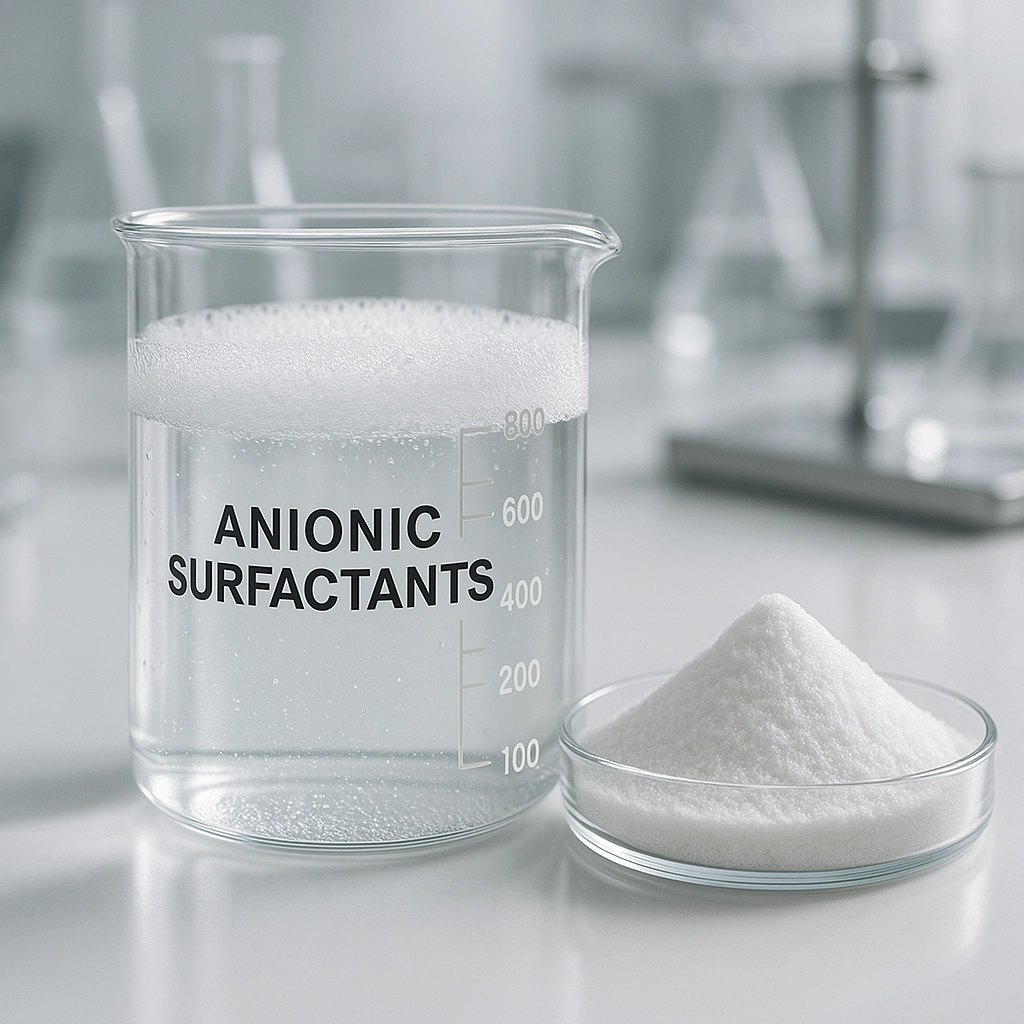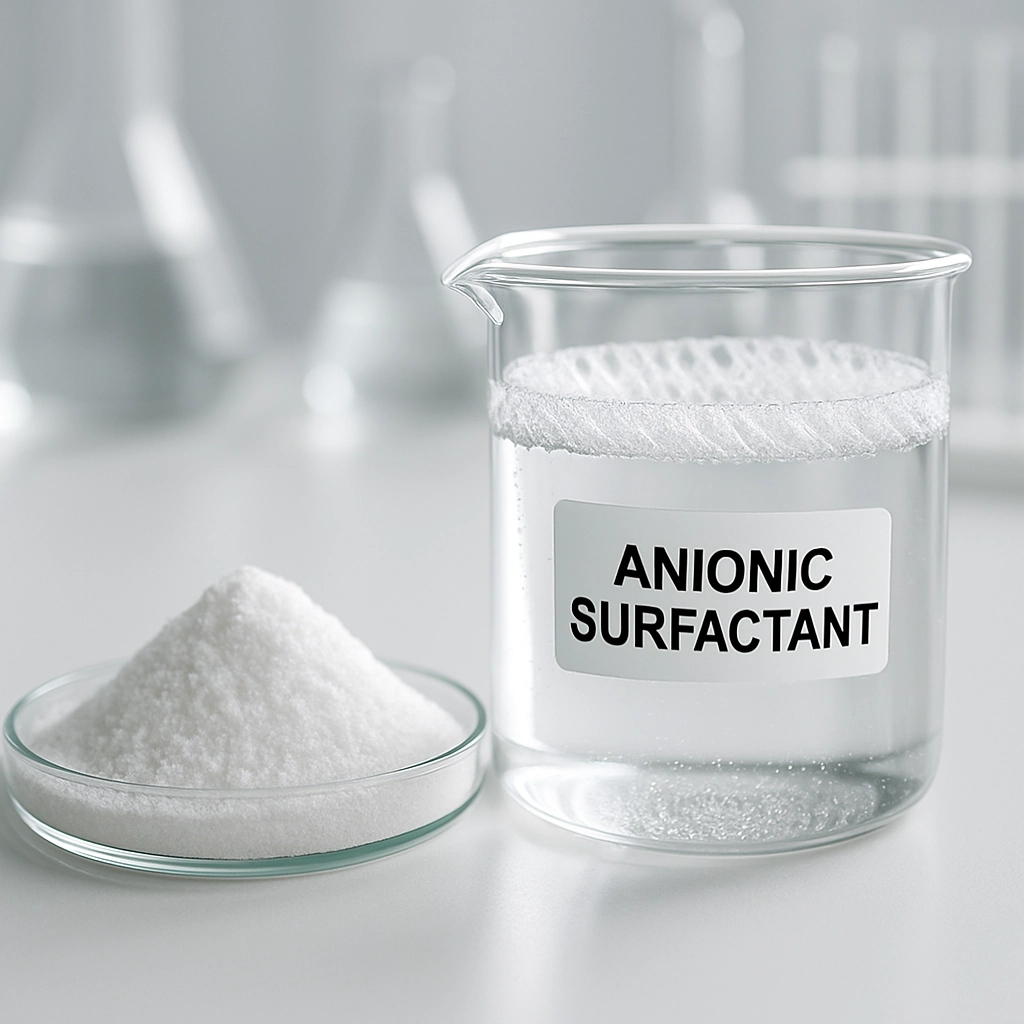


Anionic surfactants, known for their strong foaming ability, are exceptionally effective at removing grease and dirt. They form the backbone of many household detergents and also play important roles in textiles, agriculture, and various industrial processes.
Their market growth is closely tied to rising global demand for hygiene and cleanliness, particularly in the Asia–Pacific region. At the same time, environmental concerns have driven producers toward developing biodegradable formulations that can deliver comparable cleaning performance while reducing ecological impact.
With advances in production technology and the use of plant-based raw materials, anionic surfactants are evolving into more sustainable, efficient, and versatile ingredients—positioning them as essential components for the next generation of cleaning and industrial solutions.


Anionic surfactants, with their negatively charged polar head groups, are highly effective at reducing surface tension. This molecular property gives them strong cleaning power and excellent emulsification ability, making them indispensable in dispersing oils, dirt, and particulates.
Their applications span a wide range—from industrial and household cleaners to personal care products and even construction materials. The shift toward plant-based feedstocks and sulfate-free formulations reflects both environmental concerns and the need to minimize skin irritation.
Globally, the market for anionic surfactants continues its upward trajectory, fueled by innovations in formulation and the expansion of consumer-driven sectors. This evolution shows how chemistry, sustainability, and consumer health concerns are converging to reshape one of the most widely used classes of functional chemicals.
Anionic surfactants are among the most widely used surface-active agents in the detergent industry, thanks to their strong ability to reduce surface tension and generate stable foam. These compounds enhance cleaning by promoting wetting, emulsification, and dispersion, allowing greasy contaminants and fine particles to be effectively removed from surfaces.
They are highly versatile: compatible with a broad range of other surfactants—anionic, cationic, and amphoteric—and easily neutralised with alkalis to produce widely used sulfonates. Their ability to function even in acidic environments further expands their industrial applications.
Key uses include:
Laundry detergents and household cleaning products
Industrial washing for vehicles and heavy equipment
Hard surface cleaners and degreasers for stubborn oily residues
Emulsification of petroleum derivatives
Latex production processes
Textile washing and finishing
Agricultural formulations, where they act as emulsifiers to improve chemical stability and product effectiveness
This combination of cleaning efficiency, chemical flexibility, and broad compatibility has secured anionic surfactants a central role in both consumer and industrial markets, with ongoing innovation pushing their applications into ever more specialized areas.
Anionic surfactants, with their negatively charged hydrophilic groups, are among the most effective agents for reducing surface tension. Their ability to generate stable foam and provide strong emulsification makes them indispensable in household detergents, personal care products, and industrial cleaners.
The global market value for these materials is projected to reach about 22.4 billion USD in 2025, with an estimated 5.1% CAGR through 2032. This steady growth is driven by their wide applications—ranging from shampoos and soaps to construction additives and heavy-duty industrial detergents.
At the same time, environmental concerns and issues of skin sensitivity linked to certain derivatives are reshaping the industry. Manufacturers are shifting toward biodegradable, milder formulations, often based on plant-derived feedstocks such as coconut and palm oil. Coupled with advanced production technologies, this transition supports a more sustainable and competitive market.
Leading players like BASF and Clariant are strengthening their positions through innovations in sulfate-free surfactants, setting new benchmarks for performance and eco-friendliness.

| Specification | Property |
|---|---|
| 97 ± 1% | Active Matter % |
| Dark Brown Liquid | Appearance |
| ≤2% | Unsulfonated Matter % |
| ≤1.8% | Sulfuric Acid % |
| ≤70 (Klett) | Color (Klett) |
| ≤0.5% | Water % |
| 220 kg / HDPE Drum | Packaging |
| Store in a cool, dry place away from direct sunlight | Storage |



WhatsApp us